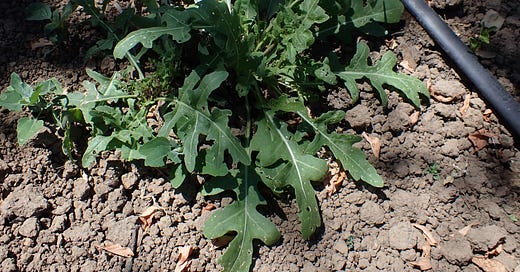How the Agricultural Mindset Distorts our Perspective of Ecology
"Invasive Plants" are just "Weeds" by another name
This month’s post for paid subscribers is another draft chapter from the book I’m co-authoring with Nikki Hill, tentatively entitled, “Don’t Blame the Messenger: A critique of the ‘invasive plant’ narrative.” Paid subscribers will receive a copy of the full draft when completed.
“Such plants are ‘weeds’ only to those who make a business of selling and applying chemicals.” ― Rachel Carson, Silent Spring
In the popular mind, “invasive plants” fit neatly into the cultural category of weeds, and hence are deserving targets for destruction. Just the label is enough to inspire an immediate conclusion: “Okay, another kind of bad plant to get rid of. Got it.” This casual acceptance totally elides all the complexities of ecological interactions, which include countless more-than-human creatures who have uses for plants that we don’t (or think we don’t). This perspective of plants is a product of the agricultural mindset. Practically speaking, weeding a garden is one thing; ecologically thinking, however, how we interact with wildlife habitat is quite another.
Our agricultural tradition in the West is descended from the neolithic revolution in Western Asia, which started ~11,000 years ago, and was dominant in the region by 6,500 years ago. Previously, we were gatherers and hunters with seasonal migratory lifestyles, harvesting wild plants. Contrary to popular belief, we were not merely opportunistic foragers, but also tenders, propagating favored species by seed and root, and caring for patches and groves with fire and pruning. Farming, by contrast, was sedentary, and focused on taming plants (though scientists disagree about how intentional this process was at firsti). Our lifeways transformed from the participatory and the reciprocal to the extractive and the acquisitive. The agricultural mindset that coalesced from this transformation is marked by dichotomous thinking and a drive to dominate.
Ecologically, our attempts to exclude wild plants that weren’t our our crops stimulated adaptations among those plants, and in this way “weeds” were born.
[W]ith the onset of successful intentional cultivation, hunter-gatherers cleared fields near their habitations for planting. The intensive disturbance of these environments led to the proliferation of synanthropic plants. These plant species, both annuals and perennials, exhibit functional and adaptive traits that enable them to withstand the disturbed habitats and increase their biological fitness in natural plant communities altered by natural or anthropogenic forces... They were able to rapidly establish extensive populations, especially with the expansion of farming...ii
As a concept, then, “weeds” have been with us longer than we’ve had writing or the wheel. It’s that deeply set in our worldview to divide the plant world into two: good plants and bad plants, crops and weeds. On the other hand, our species has been around 300,000 years old, and the earliest archaeological evidence of “weeds” is 23,000 years old,iii which is only 8% of that time. As for full-on established agriculture, that’s only 2% of the total. So we lived without these concepts for far longer than we have been centering them, and the future is uncertain. All that being said, it’s worth it to dive into the cultural construct of “weeds” since it’s so prevalent now, and is so pertinent to the topic of “invasive plants”
Keep reading with a 7-day free trial
Subscribe to Speaking for the Trees, No Matter Where They're From to keep reading this post and get 7 days of free access to the full post archives.





